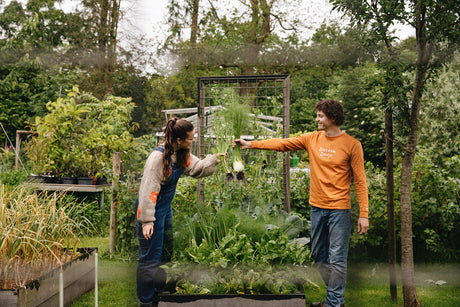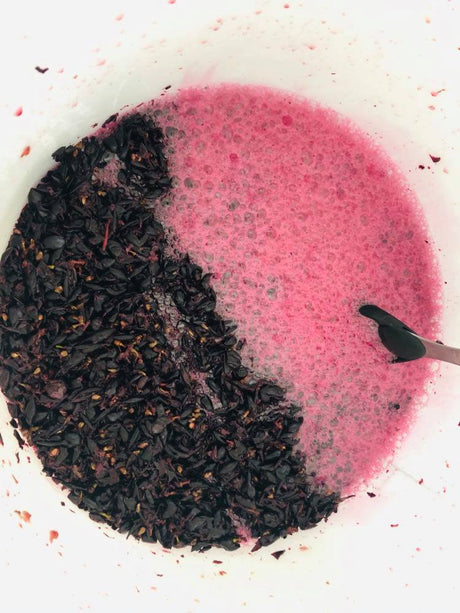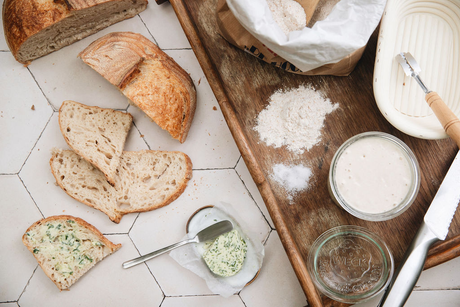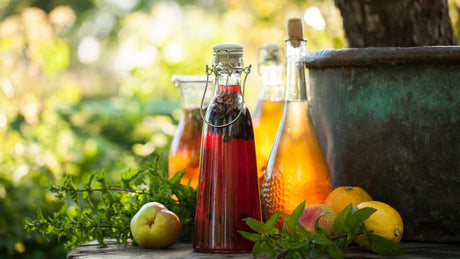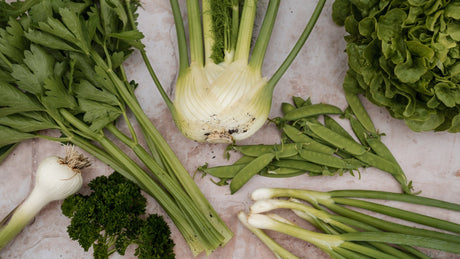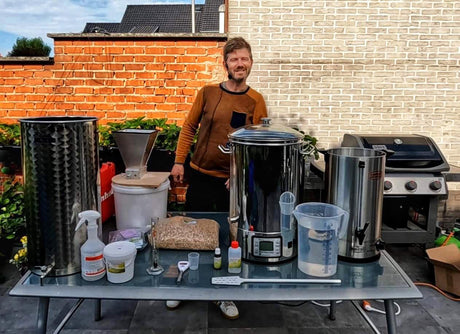Starting a Vineyard: Some Principles Before Starting a Vineyard
Introduction - Some Principles of Starting a Vineyard
In the previous article, " Planting or establishing a hobby vineyard: how to practically get started? ", you could read all about planning your vineyard and planting. I hope it's been easy enough to understand so far; we'll continue step by step until your homemade nectar finds its way into the digestive tracts of all your loved ones. Starting a vineyard is impossible without understanding a few fundamental principles. The first few years are nerve-wracking, so let's not make any mistakes that will leave you waiting another year for grapes. And there they are, the first phase of starting a vineyard (planting) is complete. The small sticks, sticking out 8-12 cm from the ground, their waxy coating as if it were their makeup for their first ball. And what a party it will be. But before I explain the first years of the vine, I want to explain a few principles that will help you get started with a vineyard. Focus on the principles, not the small details. These will be covered step by step and in plain language later on this site. https://youtu.be/UhY_TgW2D_Q?t=315 This link shows my 3-year-old Regent vines, on which I only allow 3 to 6 shoots to grow. Young vines bear fewer bunches.
Principle of starting a vineyard: Leave fruit according to the maturity of your vine
With this principle, I want to emphasize the importance of a balance between the strength of the plant's root system and the fruit you grow on it. For example, during the first two years of growing grapes, it's best to remove all fruit and claws. All the energy from the soil, rain, and sun should be reserved for building your plant's structure; harvesting isn't important now. This way, the root system can develop optimally to handle the hard work of the following years. By hard work, I mean the transport of water and nutrients from the soil to the vegetation and also to the fruit.

These are the claws on your shoots. In the first and second year, you can remove them along with the bunches.
Imagine a growing grapevine with a weak root system that takes off like a rocket with the first warm temperatures. Runners, claws, bunches... everything runs perfectly on schedule. The top 20-30 cm of your soil layer has sufficient water from winter precipitation, and you're beaming at your vineyard when suddenly that superficial water supply is depleted. The plant and the sun have consumed the water from the top layer (vine) and evaporated it (sun). Suddenly, your plant wilts and dies. This happens more often than you think. Therefore, during years 1 and 2, remove all claws and bunches on the vine as soon as possible and allow the plant to form a good foundation, a strong root system. I'll explain how to do this later.
Some tips (or many tips) about harvest yield
I know what it's like to stand in front of a row of vines with 30 or 40 bunches per vine. You can hardly swallow the saliva when you think of all the fermented juice that will add color to your meals and patio moments. And in some situations, those bunches are allowed to ripen, while in others, it's better not to. The yield, or the number of grapes you harvest per vine, is truly crucial. Below, I've compiled all the fundamental tips I know about yield in hobby vineyards.
The better your wine year, the earlier the grapes ripen
The better your vintage goes, the earlier your vines bud, the sooner the flowers form, the earlier the fruit set, the earlier the color, and of course, the harvest of your ripe grapes. Grapes are, of course, quite ripe when you harvest them. This prevents unpleasant flavors in wine. You have one season to ripen your grapes, not a second longer. It's hardly practical to cover your vines and install grow lights to extend your season. That's not very practical.
100 days from flowering to ripe grape
After flowering, your vine typically needs about another 100 days to produce ripe fruit. So, you'll know your expected harvest date roughly around June. If your vintage is slow to get going and you only have flowers at the end of June, you know you won't harvest until early October with an average vine. This also depends, of course, on the grape varieties and the wine style you want to make. Your estimated harvest date is important for determining your yield.

100 days after flowering is the average time until harvest
Less fruit per surface area results in more complexity
Even if you get two identical grape varieties perfectly ripe in terms of acidity and density/sugar, a vine with 40 bunches will never produce the same quality fruit as one with 16 bunches. The nutrients flowing through the sap are limited and cannot nourish an infinite number of bunches. Each grape variety, soil type, pruning method, and so on has its ideal yield. It's up to you to find a good yield for your vines.
Harvesting in October and November is like playing with fire
Harvesting conditions are ideal in August and September. In October and November, you need a bit of luck, and your grapes must be in top condition to continue ripening. Damaged grapes, for example, due to disease or sunburn, can burst open, attract wasps, and so on.

My September 2020 harvest of 35 vines, very low yield, due to sunburn
Think carefully and prune bunches when things aren't going so well
As mentioned before, it takes less time to ripen fewer bunches. So, if you have a vintage with less favorable conditions or are unlucky (sunburn, mold, bird damage, poor choices as a budding amateur winemaker, etc.), prune more bunches than if your year had been perfect.
Get to know your vineyard and adjust your soft pruning for the following year
Even at the beginning of the year, with soft pruning, you can anticipate your yield. For soft pruning in March, I keep 6 to 8 shoots on a vine in Guyot Simple. Initially, I keep all the bunches per shoot, two or three depending on the plant's vigor. This gives me a better chance of healthy, ripe grapes. During the year, I might also cut away bunches if I'm worried I won't get all the grapes ripe. If you have resistant varieties and experienced few problems during the first few harvests, you can keep more shoots and/or leave more bunches hanging.

These 6 bottles contained the first wine I ever made in 2019. Rosé wasn't my initial plan, but downy mildew and botrytis decided otherwise.
Change your wine style if necessary
In 2020, I wanted to make a full-bodied still white wine from my oaked Chardonnay (white), a tight, fruity Johanniter still wine (white), a subtle Pinot Noir with a light oak note, and a Johanniter rosé. After taking measurements in July and August, I quickly realized I wouldn't achieve the density needed to make those wine styles. At the end of July, I had another day of 42 degrees Celsius, and I had defoliated the bunches on the south side. The result: damaged grapes from sunburn on the south side, which attracted wasps once they started to burst. The heatwave hadn't improved the ripeness of my grapes either. The final result was a Johanniter petnat, a Chardonnay and Pinot Noir petnat, and a sweetened still Regent.
Yield - What style of wine do you want to make?
Powerful complex silent red or white powerhouses - late ripe
It's important to know which wine style you want to make. Certain wine styles require grapes that are fully phenolically ripe. This means that the anthocyanins and tannins in your grapes must be 100% ripe to produce a full-bodied, powerful still wine. This applies to both red and white wines. These are also often wines that undergo skin maceration and/or oak aging. Underripe grapes will develop bitter flavors with an unpleasant, dry mouthfeel (green tannins) and disruptive aromas such as geranium, green pepper, and so on. Ripe grapes create a complex, structured, and balanced wine where the broad mouthfeel is more important (a meal wine) and where you can spend hours exploring the glass with your nose, searching for even more aromas. These are also wines that can age longer, and the price tag is often higher. Logically, lower yields, a longer vinification process, and a higher price tag.
Playful rosé wine and tight white wine, fresh style - average ripeness
With rosé and crisp white wines, skin contact is limited, and you're aiming for fruity and floral aromas. The alcohol content is lower, and tannin is also minimal and often even undesirable. Rosé and crisp white wines surf your taste buds on a wave of acidity and fruit. They're also called easy-drinking. This allows you to harvest less ripe fruit and consequently increase your yield, especially during a favorable vintage and early flowering.
Sparkling wine or sparkling wine - early ripe
Sparkling wine is harvested early. A sparkling wine grape has an average pH of 2.9-3.2 at harvest, or 8 to 12 grams of tartaric acid per liter. More on this later. The fact that you don't need much ripeness in your grapes means you can harvest well before October, often even as early as August. Therefore, choosing your yield for sparkling wine will be determined less by the weather and more by the condition of your grapes, but primarily by the quality you want to produce. As mentioned earlier, fewer bunches, like good soil, produce more complex fruit and better wines.

In early 2018 I pruned these Pinot Noir grapes, the pruned wood can be chopped and returned to the vineyard as a mulch layer
Principle of a vineyard inside: The sap and energy returns to the trunk in winter
When winter arrives and the sap stops flowing through the plant, it enters vegetative dormancy. The sap returns, so to speak, to the vine's trunk. It's also sometimes said that energy returns to the roots. So don't prune too early. As a hobby winemaker with five to a few hundred vines, we can wait to prune until late February or early March. Professional winemakers start pruning much earlier, but we, as hobby winemakers, don't. This is another advantage we have over professional winemakers. The later we prune, the longer we delay the vine's sap flow and growth, and the less susceptible our vines are to a late winter frost. A period of frost in April or early May is disastrous for the young shoots. You can still hope for a second flush of shoots from your vines, but they are often of inferior quality. Another tip: Frost will first strike the tips of your shoots. The longer you leave your fruiting cane (baguette) in the spring, the greater the chance that only the tip will freeze. Since you still need to cut the baguette back to 6 to 8 buds, cut off the damaged section. And there's more to it than meets the eye, here's another tip: let the shoot that will become your fruiting cane (baguette) grow vertically and don't bend it over immediately. Frost usually hits harder closer to the ground. It's perfectly understandable if you don't quite understand the last two tips. Just be patient and keep reading on Plukkers.com, and everything will be fine :)
Principle of starting a vineyard: Grapes grow on the shoots of wood from the previous year
Want to start a vineyard? This principle is one of the most important we, as winegrowers, must understand. Grapes grow on the shoots of previous years' wood. This year's shoots emerge from the buds of last year's shoots. We usually keep one or two shoots from the previous year to bend to our first wire at 70 cm (Guyot pruning method). We prune one or two other shoots to two buds (courçons in French) with an eye to next year's growth. Pruning is, of course, the most important thing here. You can't grow fruit from every shoot from the previous year; that would create a jungle. With the pruning method I promote, "Guyot Simple," we'll keep just one shoot from the previous year and bend it to the first wire, which we've stretched at 70 cm. We'll discuss the technical details of this pruning method later on this site.
Forming your tribe: 'The only way is up!'
There was a huge hit in the '90s by Yazz, "The Only Way Is Up." And that principle also applies when shaping your trunk. When making choices about how to grow your trunk in year 1 and/or 2, choose verticality. Sap flow is most efficient when your trunk is vertical. So, if in year 1 or 2 you have a large sideways shoot and a small upward shoot, don't immediately choose the largest one to tie to your vine stake. Also, consider its growth pattern.

There are many different ways to grow a vineyard. I use the third from the top left. Guyot Simple. Source: Wine Folly
Keep growing central runners
In the third or fourth year of your young vines and later, you'll make many pruning decisions. A nice aspect of growing grapevines is that you always have to think a year ahead when it comes to your renewal. Remember, shoots grow on the previous year's shoots. For convenience, I call a shoot you want to bend to create new shoots next year a renewer. The more centrally you stay with your renewers, the more efficient your sap flow will be. Again, if you keep reading, you'll become a pruning champion and learn how your vine works. It took me years to get reasonably good at it, too.
Principle of Starting a Vineyard: Protect Your Vineyard Before Problems Occur
I personally have to be very ill before I go to a doctor or take medication. I can ride it out. This isn't the case with vines. Prevention is better than cure. There are no pills or injections for vineyards to get rid of diseases. Especially as a hobby winemaker, we don't have any miracle cures. The reason we often feel powerless against diseases and pests is the density of plantings and the monoculture of your vineyard. In the wild, nowhere do 4,000 vines spontaneously grow on a hectare, neatly arranged in rows. A table laid for fungi, birds, harmful insects, rabbits, and other threats to your vineyard. Diseases and pests can also spread very quickly in a monoculture. It's also difficult to start a polyculture with wine grapes in a vineyard. Or is it? Hmm, it seems easier to me to plant vines in rows than to alternate them with other crops in any form. So work preventatively at various levels. Biodiversity creates natural enemies in your vineyard. Green manures nourish your soil and attract beneficial insects. Ladybugs and their larvae, for example, eat 50 aphids a day. Protect your vines during rainy periods, shortly after a short, heavy rainfall, or during sultry, warm temperatures. You decide your own strategy. More concrete tips for crop protection will follow later on this site. But the core principle is: Prevention is better than cure.

Crop protection in the vineyard. Sometimes against my will, but it has to be done :)
Principle of starting a vineyard: The vine needs air and light
Somewhat related to preventative work, I'll also talk about light and air in the vineyard, which are related to canopy management, or leaf wall management as it's often called in Dutch. An airy leaf wall allows the vine and its shoots to dry out faster after rain or morning dew. Faster drying also reduces the risk of mold. An airy leaf wall is also better treated with a backpack sprayer, for example. Few backpack sprayers are powerful enough to spray through a very dense canopy. Light is also essential for the ripening of your fruit. But extreme light and heat can cause sunburn, which is harmful to your leaves and especially your grapes. So, I apply the following principle. In the cluster zone, I defoliate only on the east side. That is, I remove the leaves and the suckers, or axillary shoots. On the west side, where the sun shines brightest, I leave all the leaves hanging in the cluster zone but remove all the suckers. I leave all the leaves above the bunches and prune the side shoots to two leaves. Professional winemakers mostly do this mechanically. We can work more precisely with pruning shears.

Defoliate in the bunch zone on the east side, and remove only axillary shoots on the west side.
Finally, about a vineyard
I'm glad you read all the way to the end of this article. Starting a vineyard is an adventure with good and bad moments. I hope I can convey my limited knowledge to you in plain language. If you have any tips, comments, or questions about what I wrote, please post them in the comments section of this article. I'm very grateful. If you find the information on this website valuable for your winemaking passion, definitely consider purchasing your winemaking and growing equipment from this website. You'll ensure that even more positive winemaking energy can flow to you. Wishing you lots of peace, fun, and beautiful moments in your vineyard or in your winemaking dreams, Tom


